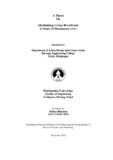Please use this identifier to cite or link to this item:
https://elibrary.khec.edu.np:8080/handle/123456789/521Full metadata record
| DC Field | Value | Language |
|---|---|---|
| dc.contributor.advisor | Ar. Libas Phaiju | - |
| dc.contributor.author | Bhasima, Melina | - |
| dc.date.accessioned | 2023-06-09T09:46:28Z | - |
| dc.date.available | 2023-06-09T09:46:28Z | - |
| dc.date.issued | 2022-09 | - |
| dc.identifier.uri | https://elibrary.khec.edu.np/handle/123456789/521 | - |
| dc.description.abstract | Rivers are a vital component of any city, and their consideration in urban design is crucial. Urban river and river fronts are being encroached by private and public. The use of river has been totally altered, narrowed and polluted. The change in nature of the river and river edges has created the gap of interaction between the river and people. The accessibility to the river is very rare due to the vehicular corridor road and fencing. The current situation in most urban rivers in the basin highlights several concerns. The primary objective of this study is to present the condition of the current riverfront trends in national and international practice and set design guidelines for the Hanumante riverfront. The study also reveals the impact of the river corridor roads in the environment, river and people. The direct impact on sociocultural activities is also shown through mappings. The rapid urbanization of the city has adversely affected the river with various forms of encroachment in the flood plain, becoming a major issue for the city authority. This phenomenon has led to the detachment of the city from the river and gave rise to the urban flooding. In view of this series of the satellite maps, the changing scenario of the built environment and public open space is the serious issue for the environment and flood. The study provides a set of planning and design principles that will allow communities to reclaim urban river edges in the most ecologically sound and economically viable manner. This study would also guide planners, mayors, public works departments, environmental officials, river advocates, and the general public in their search for effective riverfront restoration covering key topics related to human interaction with rivers and providing a set of essential strategies to help communities to achieve more with their riverfront revitalization efforts. The purpose of this work is to create a framework that facilitates the comprehension of river public spaces and may guide to an adequate planning and management of the riverside recreational spaces. | en_US |
| dc.language.iso | en | en_US |
| dc.subject | Urban River, riverfront, flood plain, revitalization, encroachment | en_US |
| dc.title | Rethinking Urban Riverfront] A Study of Hanumante river | en_US |
| dc.type | Thesis | en_US |
| local.college.name | Khwopa Engineering College | - |
| local.degree.name | MSc in Urban Design and Conservation | - |
| local.degree.level | Masters | - |
| Appears in Collections: | Master of Science (M.Sc) in Urban Design and Conservation | |
Files in This Item:
| File | Description | Size | Format | |
|---|---|---|---|---|
| Rethinking-Urban-riverfront-report-melina-Bhasima.pdf Restricted Access | 4.54 MB | Adobe PDF |  View/Open Request a copy |
Items in DSpace are protected by copyright, with all rights reserved, unless otherwise indicated.
